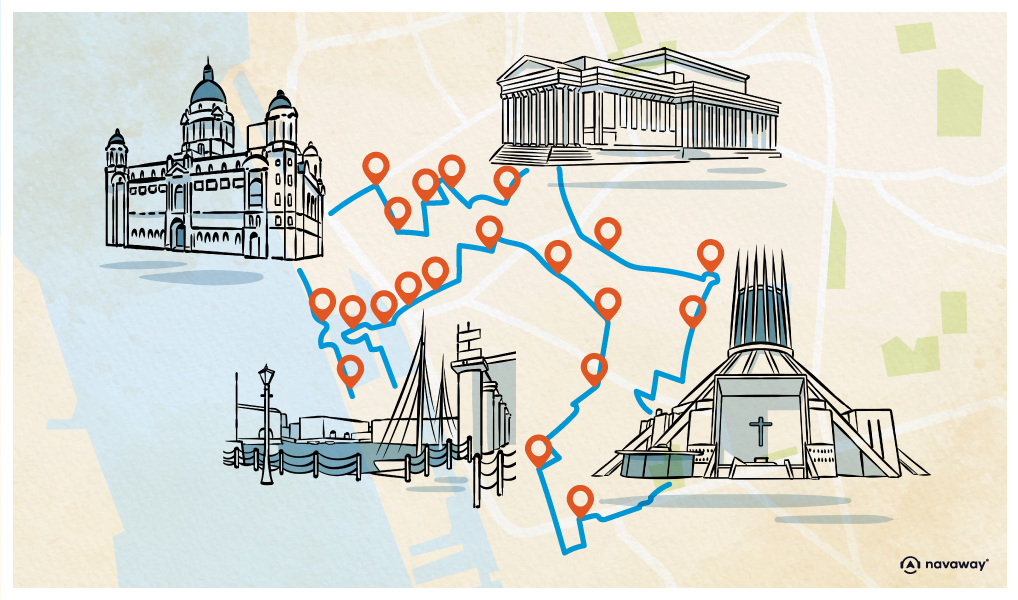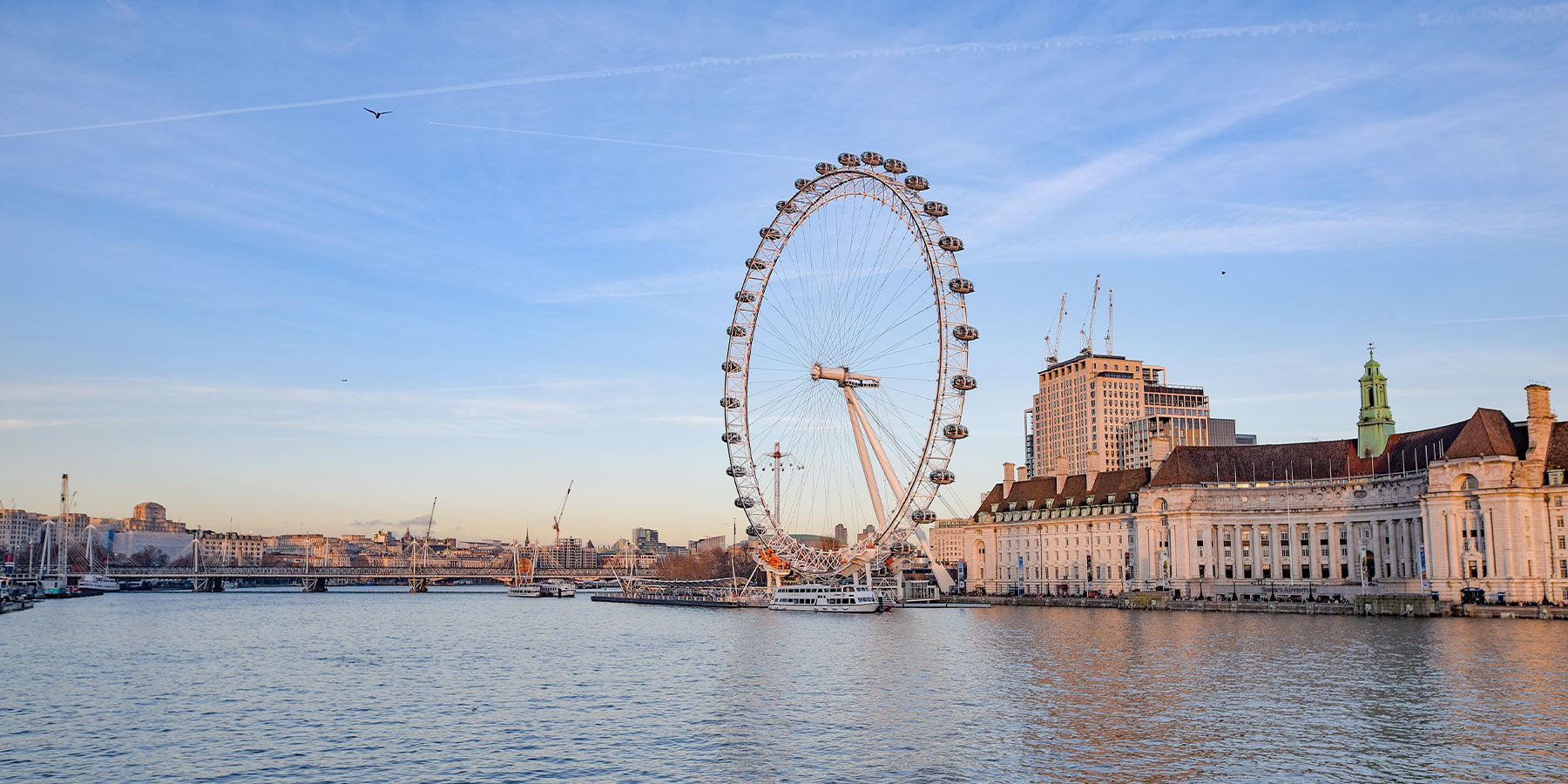
The Three Graces

This point of interest is available as audio on the tour: Visit Liverpool, The world in one city
You are facing the most iconic group of buildings in Liverpool: The Three Graces. Comprising, from left to right, the Royal Liver Building, the Cunard Building in the center, and the Port of Liverpool Building on the right. The latter was the first to be built, in 1907, to house the administration of the Mersey Docks. It represents the maritime power of the city and impresses with its dome, originally intended for the Anglican Cathedral. It is Grade II listed and now contains offices, so it is not open to the public. However, if you are curious, you can still enter the main hall, which is covered in marble and admire the stained glass windows representing each country of the British Empire. On the far left, the Royal Liver Building is perhaps the most representative of the city. Completed in 1911, it was, at 90 meters high, the tallest building in Europe at the time. Its clock face is also the largest in England, surpassing even that of Big Ben. The designer, Walter Aubrey Thomas, crowned the Royal Liver Building with a copper dome upon which the two Liver Birds perch. The Liver Bird, emblem of the city, is a mythical bird, part eagle, part cormorant. You can’t see this from here, but they hold in their beaks a sprig of broom, in homage to the Plantagenets. Yes, you probably never made the connection, but apparently the name of the Plantagenet dynasty (you know, Eleanor of Aquitaine, Henry II, Richard the Lionheart, etc.), well, their name would come from the 12th century when Geoffrey V, Count of Anjou, had the habit of planting a sprig of broom on his hat before going hunting. In short, the birds thus have a sprig of this plant in their beak. Local folklore says that they represent a couple. The male gazes out over the Irish Sea to watch over the sailors while the female watches over the women and children who stayed in the city. Coloquially, it’s joked that it’s the female who faces the sea to watch for sailors, while the male looks towards the city to make sure the pubs are open. It’s also believed that the day when the pair of birds chooses to fly away together will mark the end of the city of Liverpool. And finally, in the center, you have the youngest of the three buildings, the Cunard Building, inaugurated in 1916 as the headquarters of the Cunard Steamship Company. It is here that the Queen Mary and Queen Elizabeth ships were conceived and designed, and where the Britannia was chartered in 1840. And since we’re talking about famous ocean liners, know that the Albion House, just across the way, is the former headquarters of the White Star Line, owner of the Titanic. The Three Graces thus represent a significant part of Liverpool’s historical heritage and are now listed on UNESCO’s World Heritage List.


Discover Liverpool with app
An interactive guide through the most beautiful streets, squares, and districts
25 fun audioguides full of historical facts, anecdotes, and legends




Comments